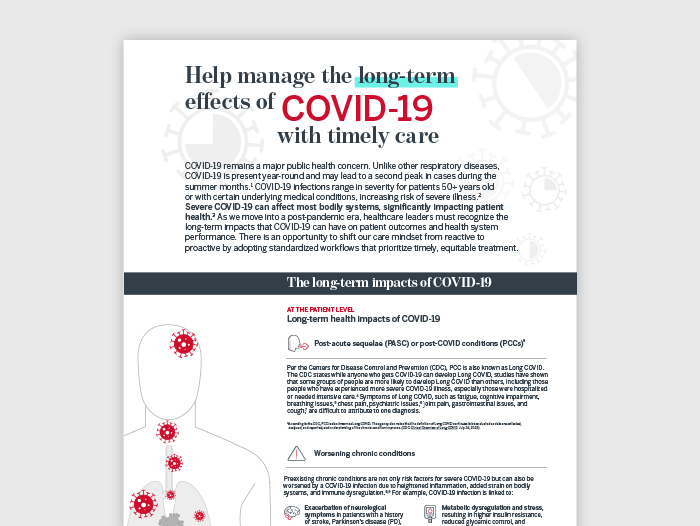Auto logout in seconds.
Continue LogoutIn the United States, COVID-19 hospitalizations have been rising steadily since July, and the daily average number of hospitalizations nationwide has increased by around 20% over the last two weeks. Here's where hospitalizations have increased the most.
Where COVID-19 hospitalizations are rising
Since CDC stopped tracking new COVID-19 cases in May, the agency has largely relied on hospitalizations, ICU admissions, and wastewater data to determine the current burden of COVID-19.
According to CDC data, COVID-19 hospitalizations have been increasing steadily nationwide since July, and the average daily COVID-19 hospitalizations has increased by 20.2% over the last few weeks.
For the week ending Aug. 5, there were 10,320 new COVID-19 hospital admissions nationwide, a 14.3% increase from the number reported the week before. Across the United States, 24 states had substantial increases in new COVID-19 hospitalizations, and 11 states had a moderate increase.
According to health experts, this increase in cases and subsequent hospitalizations may be partly due to more people spending time indoors to escape the summer heat or more frequent travel.
"There are still plenty of people getting together in close proximity for prolonged periods of time to provide opportunities for highly contagious variants to spread," said Dr. William Schaffner, a professor of infectious diseases at Vanderbilt University Medical Center.
Another potential factor includes the spread of new omicron subvariants, including EG.5.1, or "Eris." Currently, EG.5.1 is the dominant COVID-19 strain in the United States, accounting for the largest proportion of cases. Although the subvariant is believed to be more transmissible than older variants, there is no evidence to show that it causes more severe disease or has different symptoms.
Is the US seeing a summer COVID-19 surge?
According to Schaffner, "[t]here has been an increase in cases anecdotally and over much of the United States," but "it's not a surge, and it's not anything like we experienced one year or two years ago."
Compared to past summer, the current increases in cases and hospitalizations are relatively low. In addition, CDC data shows that COVID-19 mortality rates continue to decrease week by week.
"It's really important to reinforce that the absolute number is still much, much lower than in various different peaks throughout the last couple of years," said Dr. Natalie Azar, a medical contributor for NBC News. "We've always had the expectation that there was going to be a seasonality to COVID, kind of similar to flu, that we're going to see this ebb and flow."
In addition, Azar noted that the United States is much more prepared for COVID-19 increases now than it was in the past. "We're in a different place than we were a few years ago. … We have vaccines, we have an antiviral that works very well."
Currently, vaccine manufacturers are working on updated COVID-19 boosters for the fall, and the shots are expected to be available in mid-to-late September once approved by FDA. So far, preliminary evidence suggests the updated COVID-19 shots will be effective against EG.5.1, and Moderna's vaccine is also expected to protect against another emerging subvariant FL.1.5.1, nicknamed "Fornax."
For now, health experts say people should assess their risk of COVID-19 on an individual basis and make an effort to protect themselves. This includes staying up to date with vaccinations, testing if you have any symptoms, staying home when you're sick, avoiding contact with people who are sick, wearing a mask if needed, and social distancing.
"Some judgement depending on your level of increased risk is really important now," Schaffner said. "COVID continues to be a nasty virus." (Kee, TODAY, 8/18; CDC COVID-19 Data Tracker, accessed 8/21)
As case counts increase across the country rise as a result of COVID-19, hospitals and health systems already strained by staffing shortages must be ready to confront the challenges at stake. Access the collection of our best resources and insights for creating capacity, supporting staff, communicating with patients, and more.
Don't miss out on the latest Advisory Board insights
Create your free account to access 1 resource, including the latest research and webinars.
Want access without creating an account?
You have 1 free members-only resource remaining this month.
1 free members-only resources remaining
1 free members-only resources remaining
You've reached your limit of free insights
Become a member to access all of Advisory Board's resources, events, and experts
Never miss out on the latest innovative health care content tailored to you.
Benefits include:
You've reached your limit of free insights
Become a member to access all of Advisory Board's resources, events, and experts
Never miss out on the latest innovative health care content tailored to you.
Benefits include:
This content is available through your Curated Research partnership with Advisory Board. Click on ‘view this resource’ to read the full piece
Email ask@advisory.com to learn more
Click on ‘Become a Member’ to learn about the benefits of a Full-Access partnership with Advisory Board
Never miss out on the latest innovative health care content tailored to you.
Benefits Include:
This is for members only. Learn more.
Click on ‘Become a Member’ to learn about the benefits of a Full-Access partnership with Advisory Board
Never miss out on the latest innovative health care content tailored to you.


